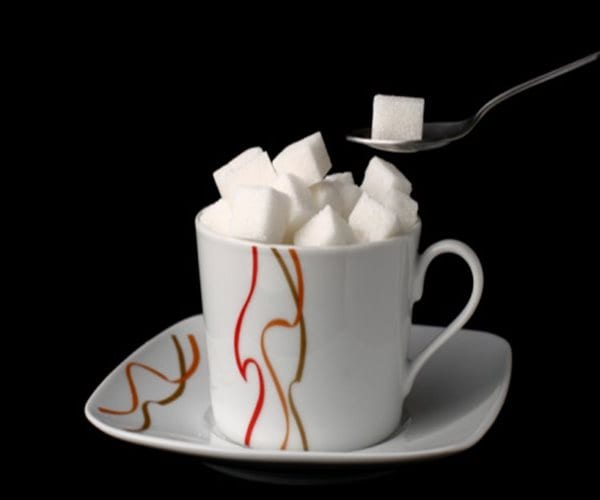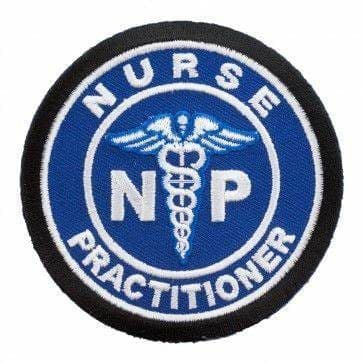
by Dr Alex Jimenez DC, APRN, FNP-BC, CFMP, IFMCP | Diets, Fitness
Americans love dining out al fresco when the summer weather is so perfect. But don’t let restaurant food throw a monkey wrench into your healthy eating plan. Dining establishments can be ticking time bombs when it comes to sabotaging your nutrition.
In fact, government surveys say that that the food you typically eat when you are not at home is nutritionally worse in every way than your own kitchen fare.
“Eating out can be challenging, but shouldn’t limit your social life,” Dr. Craig Title, a top New York City weight loss specialist tells Newsmax Health. “Here are some tips I share with my clients.”
Be prepared. Like a good scout, select your meal options before you get to the restaurant by checking the menu online. “You’ll make a more level-headed, healthier choice,” says Title.
Eat a little beforehand. Don’t arrive at the restaurant famished. Make sure you have eaten a small meal or two earlier in the day.
Nix the bread. Instruct the wait staff NOT to bring out the bread and butter basket. “Out of sight, out of mind,” says Title. “Ask for celery and carrots sticks instead.”
Drink water. Down one full glass of water as soon as you are seated to help you feel fuller sooner, which will make you eat less.
Ask for it your way. Dining out is not the time to be a meek consumer, notes Dr. Michael F. Jacobson, Ph.D., executive director of the Center for Science in the Public Interest (CSPI) and coauthor of the book, “Restaurant Confidential.” His advice: “You need to be assertive and asked for your food to be prepared they way you’d like it and very often the restaurant will comply.” For example, choose grilled fish over fried and extra veggies instead of French fries.
Go for healthier fare. Order from the “light” or “low fat” section of the menu. Many chains, even Chinese restaurants, offer lighter fare with nutritional info on the menu.
Make salad more than a side. Order a salad with lemon juice or balsamic vinegar and treat it as a first course, before you eat anything else. Scientists at Pennsylvania State University found that people who ate a big green or veggie salad before their entree consumed fewer calories.
Order double appetizers. This is especially rewarding when you’re dining at a seafood restaurant with sumptuous starters. An appetizer order of oysters on the half shell and another of steamed shrimp makes a complete and low-calorie meal along with your salad.
Avoid high-calorie dressings. Keep your salads tasty but healthy by shunning anything in a creamy high-calorie sauce and using raw or marinated vegetables, like artichoke hearts and mushrooms, for extra flavor. Skip the cheese and bacon bits, too.
Do the fork dip. Keep your salad dressing on the side and dip your fork into the dressing before skewering a forkful of salad. This makes the lettuce taste great and you won’t soak the greens in dressing.
Have the fish. When CPSI evaluated food served at seafood chains and independent restaurants they found many low-fat and low-sodium options on the menu. Just don’t order it fried. Stick to steamed, baked, broiled and blackened or grilled.
Read the fine print. Pay attention to words like “breaded, crisp, sauced or stuffed” as these indicate loads of hidden calories, much of it saturated or even trans-fats. Other words of caution are, “butter, pan-fried, Newburg, Thermidor, and cheese sauce.”
Limit alcohol. Instead drink soda or seltzer water. Enjoy one glass of wine or beer with your meal and order coffee or tea for dessert.
Skip the fancy drinks. Pass over the umbrella specials such as margaritas and Mai Tais and other exotic mixed drinks as they are chock full of sugar. Opt instead for a glass of vodka, wine, a light beer or a simple martini if you must imbibe.
Choose fruit for dessert. Title suggests sharing the finale with your date. Fresh fruit, like strawberries or blueberries, during the hot summer months makes an excellent dessert without any guilt.
“Most importantly, enjoy your food,” says Title. “Chew slowly and take time between bites. Focus on the occasion and the people you are dining with, rather than just the meal.”

by Dr Alex Jimenez DC, APRN, FNP-BC, CFMP, IFMCP | Diets, Fitness, Integrative Functional Wellness, Integrative Medicine
Is coconut oil a metabolism-boosting superfood or an artery-clogging threat to heart health?
That question has fueled a raging debate for many years, and it was reignited in mid-June when the American Heart Association (AHA) issued an advisory reiterating its longstanding recommendation to avoid saturated fats. Attention quickly focused on coconut oil, which has become trendy in natural health circles despite its high saturated fat content.
Proponents of coconut oil say its medium-chain triglycerides are quickly burned for energy, increasing metabolism. Coconut oil fats are also said to be good for the brain, which is made mostly of fat, and help regulate blood sugar and, ironically, cholesterol levels.
But the AHA advisory contends that all saturated fats raise risk of cardiovascular disease.
“Taking into consideration the totality of the scientific evidence…we conclude strongly that lowering intake of saturated fat and replacing it with unsaturated fats, especially polyunsaturated fats, will lower the incidence of cardiovascular disease,” states the advisory.
The AHA researchers specifically advise against using coconut oil, which they note is 82 percent saturated fat and raises “bad” LDL cholesterol levels, “a cause of atherosclerosis.”
But many other scientific reviews in recent years — including one meta-analysis encompassing nearly 350,000 people followed for as long as 23 years — found no link between saturated fat and heart disease.
“Those reviews were much more limited because they didn’t take into consideration what the substitution [for saturated fats in the diet] was,” explains Dr. Alice Lichtenstein, co-author of the AHA advisory. “The better reviews that looked at replacing saturated fat with either carbohydrates or mono- or polyunsaturated fats, show clear differences.”
Many natural health practitioners take exception to the AHA conclusions, including integrative cardiologist Dr. Jack Wolfson. He contends that AHA researchers cherry-picked data from decades-old studies, and that branding all LDL as harmful is outdated science.
“Total LDL numbers are a very poor prognosticator of heart disease,” says Wolfson, a doctor of osteopathy and board-certified cardiologist based in Phoenix, Ariz. “What’s more relevant is LDL particle size and numbers. Small, dense particles are bad for the heart, but studies show that large fluffy particles, like those promoted by coconut oil, cause no harm.”
But Lichtenstein, director of the Cardiovascular Nutrition Laboratory at Tuft University’s Human Nutrition Center on Aging, dismisses the LDL particle size factor, saying, “There’s much more written on the Internet about that than data to support it.”
Wolfson further questions AHA recommendations to use “highly processed” vegetable oils, saying their omega-6 fatty acids can contribute to systematic inflammation. In an AHA newsletter, the advisory’s lead author, Dr. Frank Sacks, suggests that people forsake butter and coconut oil for cooking and use canola, corn, soybean, and extra virgin olive oil instead.
“There’s nothing wrong with deep frying as long as you deep fry in a nice unsaturated vegetable oil,” Sacks adds.
That suggestion may send shudders through natural health practitioners, who widely contend that vegetable oils break down into harmful compounds under high heat.
“Coconut oil has a high smoke point, which makes it more stable for cooking,” explains Wolfson. “Unsaturated vegetable oils oxidize through the cooking process and cause oxidative stress and inflammation in the body.”
Lichtenstein once again cites a lack of data on the adverse effect of cooking with vegetable oils, telling Newsmax Health, “It’s not a concern.”
Wolfson also points out that the evolving science of heart disease seems to be shifting away from cholesterol and more toward inflammation as the primary cause.
“The risk of a cardiovascular event – heart attack, stroke and dying — is much higher when you have inflammation,” says Wolfson, author of “The Paleo Cardiologist: The Natural Way to Heart Health” and advocate of eating diets similar to our caveman ancestors.
“Coconut oil doesn’t cause inflammation. Sugar, artificial ingredients, pesticide residue in food…these are the types of things that cause inflammation.”
He emphasizes that it’s important to eat healthy saturated fats that are organic and, if animal-based, come from grass-fed pasture-grazers. Wolfson adds that he has history on his side in the debate over whether they are healthy or harmful.
“Our ancestors ate saturated fats for millions of years,” he tells Newsmax Health. “Why would evolution make it plug up our pipes and kill us? People in the South Pacific have diets that are more than 50 percent coconut-based, and they have virtually no heart disease. If we were all on a deserted island eating coconuts, fish and vegetables, and getting plenty of sunshine and sleep, heart disease would be a non-issue.”

by Dr Alex Jimenez DC, APRN, FNP-BC, CFMP, IFMCP | Diets, Fitness
Did you know that flavored yogurt in the United States has a lot more sugar than it does in other countries? That’s because our national sweet tooth is out of control. And the more sugar we eat, the more we want.
Studies show that replacing sweet foods with sugar-free versions doesn’t help. Artificial sweeteners don’t satisfy a sugar craving.
The answer is to reset your taste buds for less sugar. According to research published in the American Journal of Clinical Nutrition, you can do this over a short amount of time, just as it’s possible to reduce a desire for salt.
Cut back on the amount of sweets you eat every day, but do it gradually. Some experts say going cold turkey can lead to a binge later on. Resist temptation by limiting the cookie and candy stash in your kitchen cabinets. Add fruit to your diet — you’ll be getting nutrients along with the sweetness, something processed sugar won’t give you.
Begin your day with a nourishing breakfast that includes protein. Buy unsweetened foods like plain yogurt, plain rolled oats, and 100 percent whole grain cereal, and sweeten them yourself. Just a sprinkle is all you need. Don’t start the sugar cycle with a donut or pastry.
Finally, exercise. Research has found that, in addition to health benefits, exercise starts a chain reaction that lowers your desire for unhealthy, high-calorie foods.
Making better choices will help you break the sugar cycle. You’ll be satisfied with low-sugar foods and appreciate sweets more as occasional treats.

by Dr Alex Jimenez DC, APRN, FNP-BC, CFMP, IFMCP | UTEP (Local) RSS
Photo courtesy UTEP Hockey Club
Staff Report July 6, 2017 151 Views
Coming off a historic season, the UTEP Hockey Club announced they will host Northern Arizona University Ice Jacks in their 2017-18 season home opener on October 13, 2017.
“Opening up against the NAU Ice Jacks will be a very good test for our club. They were 1 of 2 representatives from the Western Region to automatically qualify for Nationals. Our club knows they will be looking to improve from last year just as much as we are. We played one of our best games last season against them in January. It should make for an exciting opening home stand,” comments Coach Herman.
Last season the Miners hosted the Ice Jacks in their second home weekend of the season. The Miners swept the series with a win on Friday (5-2) and Saturday night (4-2). In late January the Miners met Northern Arizona in a three game matchup. The Miners lost game one (2-0) but swept the rest of the weekend against NAU to cap off the final road trip of the season.
Game time is TBD. The two game series will be played at the El Paso County Events Center.
The Miners finished 7th in the Western Region while NAU finished 2nd, qualifying both teams for post season play at the ACHA Tournament.
Check Also
UTEP’s freshman Emmanuel Korir had a phenomenal year and was awarded the Conference USA Athlete …

by Dr Alex Jimenez DC, APRN, FNP-BC, CFMP, IFMCP | UTEP (Local) RSS
The UTEP Athletics media relations office was recently honored by the Football Writers Association of America (FWAA) with a “Super 11” award, given annually to the best performing sports information departments in the Football Bowl Subdivision.
“I would like to congratulate our media relations staff for this tremendous honor and thank them for all their hard work,” said UTEP Director of Athletics Bob Stull. “In particular, I would like to recognize Director of Media Relations Denise Mata and Assistant Director Drew Bonney, who do an exceptional job heading up the media relations effort for football. The media relations staff puts in long hours on gameday, arriving a few hours before kickoff and staying for a few hours after the clock runs out. We appreciate their dedication to consistently providing outstanding service.”
UTEP joined Air Force, Arkansas State, Miami (Ohio), Oklahoma State and Tennessee as first-time winners. Also on the list were Clemson, Colorado, Navy, Nebraska and USC.
“Our organization believes this award is one of the most important tasks that we do each year,” said Tim Griffin of Cox Communications, the FWAA’s 2010 president and the head of the Super 11 committee.
“There are many outstanding SID staffs across the country. But these 11 departments we are honoring are consistently exemplary beyond expectations. We hope these awards help to showcase them.”
Criteria employed in determining the winners not only included how press boxes and media operations were operated, but also the quality and timeliness of information provided.
Also judged was the amount of information presented and appropriately updated on websites, and personal responsiveness to media inquiries as well as the accessibility of a program’s players, coaches and assistant coaches.
The ratings considered those departments that went the extra mile in servicing the media.
The Football Writers Association of America, a non-profit organization founded in 1941, consists of more than 1,300 men and women across North America who cover college football for a living.
The membership includes journalists, broadcasters and publicists, as well as key executives in all the areas that involve the game.
The FWAA works to govern areas that include gameday operations, major awards, a national poll and its annual All-America team.
This year’s awards, the eighth annual, were presented for the 2016 season.

by Dr Alex Jimenez DC, APRN, FNP-BC, CFMP, IFMCP | Diets, Fitness
Sen. Charles Schumer is urging federal regulators to look into a “snortable chocolate” powder, saying he’s worried that it could prove harmful and is being marketed like a drug.
In a letter Saturday, the New York Democrat asked the Food and Drug Administration to investigate the use of caffeine in inhalable food products such as so-called Coco Loko. It’s gotten buzz in recent weeks.
Schumer, the Senate minority leader, says there are too many unanswered questions about a product pitched under the innocent-sounding name of chocolate.
“This suspect product has no clear health value,” he said in a statement. “I can’t think of a single parent who thinks it is a good idea for their children to be snorting over-the-counter stimulants up their noses.”
Marketed as “raw cacao snuff,” Coco Loko includes cacao powder, which comes from beans used in making chocolate; they contain some caffeine. Manufacturer Legal Lean Co. doesn’t detail other ingredients online, but according to news reports, Coco Loko also includes common energy-drink ingredients.
It promises feelings of well-being, mental focus, ecstasy-like euphoria and a rush of “motivation that is great for partygoers to dance the night away without a crash,” according to Orlando, Florida-based Legal Lean’s website. It notes that the claims haven’t been vetted by the FDA.
The agency has said it hasn’t yet determined whether it has authority to regulate snortable chocolate.
Legal Lean Co., which sells Coco Loko online for $19.99 for a 1.25-ounce (3.5-gram) tin, did not return a call seeking comment. Founder Nick Anderson has said he didn’t consult any medical professionals but believes Coco Loko is safe. He said he developed it from snortable chocolate that’s circulated in Europe in recent years.
“There’s really no negative publicity, so I felt we’re good to go,” he told ABC’s “Good Morning America” on Thursday.
Doctors have said they’re not certain what the effects of inhaling chocolate might be.

by Dr Alex Jimenez DC, APRN, FNP-BC, CFMP, IFMCP | Acupuncture Therapy, Weight Loss
New research has found that acupuncture could be effective as a tool to aid weight loss.
Carried out by the School of Chinese Medicine (SCM) of Hong Kong Baptist University in cooperation with the Hong Kong Hospital Authority, the study looked at 72 participants, 13 males and 59 females, aged between 18 and 68.
All participants had a body mass index (BMI) of 25 or above, and had not used any other weight control measures or any medication in the three months before the trial.
The team randomly assigned the participants to two groups for the controlled trial — either the “real acupuncture group” or the “sham acupuncture group.”
All participants completed a total of 16 sessions of acupuncture treatment over an eight-week period.
The treatment included certain acupoints in the body — the areas where needles are inserted and manipulated — including areas on the abdomen and the lower limbs.
The participants also received auricular acupressure in the ears targeting the auricular points of Hunger, Shen men, Spleen and Stomach. According to Chinese medicine, these acupoints can restore and harmonize the flow of energy in the intestines as well as transform body fluid and expel phlegm.
After undergoing the acupuncture treatment, the team found that the “real acupuncture group” showed a 2.47 kg decrease in average weight and a decrease of 1.56 kg/m2 in average BMI.
The most successful result recorded was a participant who lost 7.2 kg with a drop of 3.2 kg/m2 in BMI.
On the other hand, the “sham acupuncture group” had an average weight loss of just 0.54 kg with an average lowering of 0.19 kg/m2 in BMI.
Dr Zhong Lidan, who worked on the study, suggested that the weight loss may be due to acupuncture having a stimulating effect on serotonin and beta endorphin, which suppresses appetite and increases lipolysis activity — the breakdown of lipids — resulting in weight loss.
She added that the trial could be used as the basis of future larger studies, paving the way to integrating acupuncture in a weight-loss or weight control program.
The results also come just days after a study published in the journal Evidence-based Complementary and Alternative Medicine appeared to find a reason why acupuncture is an effective treatment for relieving pain.










